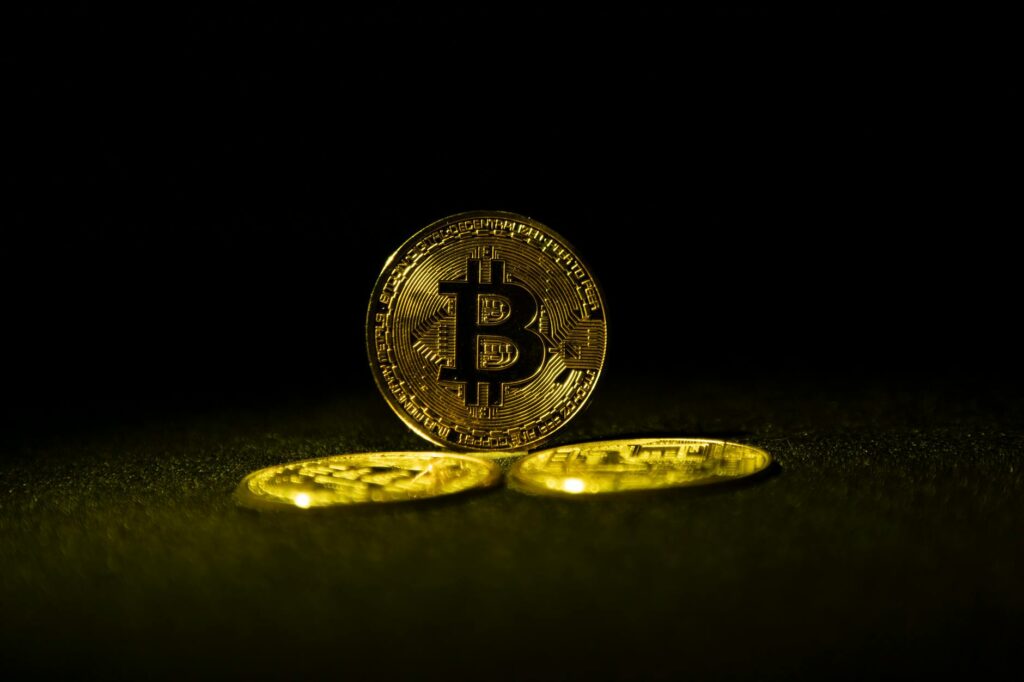Is Your Money Quietly Disappearing? You’re Not Imagining It.
Let’s talk about that cup of coffee. You know, the one that used to cost three dollars, then four, and now you’re wincing as you tap your card for a five-dollar-plus latte. Or think about your grocery bill. It feels like you’re buying less but paying more every single week. This isn’t just a feeling; it’s the reality of inflation, a silent thief that erodes the value of your hard-earned money. As governments around the world print more currency to manage economic crises, the purchasing power of the dollar, the euro, and the yen steadily declines. It’s a massive, global problem, and for many, it feels like an unsolvable one. But what if there was an alternative? A new kind of asset, born from the digital age, designed specifically to resist this decay? This is where the conversation turns to using Bitcoin as a hedge against inflation, and it’s a conversation you can’t afford to ignore.
Key Takeaways
- Inflation 101: Inflation and currency devaluation reduce your purchasing power, meaning your money buys you less over time. This is often accelerated by government policies like money printing (quantitative easing).
- Bitcoin’s Built-in Scarcity: Unlike traditional currencies, Bitcoin has a mathematically-enforced hard cap of 21 million coins. No one can ever create more, making it inherently deflationary.
- The Power of Decentralization: Bitcoin isn’t controlled by any single government or central bank. Its monetary policy is locked in by code, immune to political whims or economic intervention.
- Digital Gold: Many see Bitcoin as the 21st-century version of gold—a global, non-sovereign store of value that can protect wealth during times of economic turmoil.
- Risks are Real: While a powerful tool, Bitcoin is also notoriously volatile. It’s not a get-rich-quick scheme, and any investment strategy should account for its price swings and an evolving regulatory landscape.
First, Let’s Get Real About Inflation and Devaluation
Before we can appreciate the solution, we have to truly understand the problem. Most of us have a vague sense of what inflation is, but the mechanics are stark. Imagine the government needs to fund a massive new project or stimulate a sluggish economy. One of the easiest tools in their toolbox is to, quite literally, create more money out of thin air. They fire up the digital printing presses at the central bank, a process formally known as quantitative easing.
Sounds good, right? More money floating around! But it’s a trap. Basic economics tells us that when the supply of something increases dramatically while demand stays the same (or grows more slowly), its value drops. It’s true for baseball cards, it’s true for concert tickets, and it’s absolutely true for money.
Every new dollar printed makes every existing dollar in your bank account, your wallet, and your retirement fund just a little bit less valuable. That’s inflation. It’s a hidden tax on your savings.

When It Gets Extreme: The Ghost of Hyperinflation
Currency devaluation is inflation’s more aggressive cousin. While inflation is a slow, steady erosion, devaluation can be a sudden plunge. It often happens when international confidence in a country’s economy collapses. We see this happening in real-time in places like Argentina, Turkey, and Lebanon, where citizens have watched their life savings evaporate in a matter of months. Their national currency becomes almost worthless. People are desperate for an escape hatch, a way to store the value of their labor in something the government can’t devalue overnight.
Why Bitcoin is a Different Beast Entirely
So, how does Bitcoin offer a way out? Its design directly counters the very mechanisms that cause fiat currencies to fail. It wasn’t an accident; it was the entire point. Bitcoin was born in the ashes of the 2008 financial crisis, a direct response to a system where central banks bailed out failing institutions by devaluing the money of ordinary people.
Scarcity by Design: The Unbreakable 21 Million Cap
This is the absolute core of the argument for Bitcoin as a hedge against inflation. There will only ever be 21 million Bitcoin. Ever. This isn’t a company promise or a government policy; it’s embedded in the code that runs the network. It’s enforced by a global, decentralized network of computers, and changing it would require a consensus so vast it’s practically impossible.
Think about that. While central banks can (and do) print trillions of dollars at will, no one can create the 21,000,001st Bitcoin. This predictable, finite supply makes it a ‘hard’ asset. It’s more like a digital element, with a fixed quantity in the universe, than a piece of paper whose supply can be manipulated. When you have a growing number of people wanting a provably scarce asset, the value of that asset tends to rise over time, or at the very least, hold its ground against the flood of newly printed fiat currency.
Decentralization: No One’s in Charge
Who decides the monetary policy for the U.S. Dollar? The Federal Reserve. For the Euro? The European Central Bank. For Bitcoin? Nobody. And everybody.
Bitcoin runs on a peer-to-peer network. There’s no CEO, no headquarters, and no central server to shut down. Transactions are verified and added to the blockchain by a distributed network of miners around the globe. This radical decentralization means it is seizure-resistant and censorship-resistant. More importantly, for our discussion, it means no single entity can decide to ‘print’ more Bitcoin to bail out a bank or fund a war. The rules are the rules, transparent and locked in code for everyone to see. This removes the single greatest point of failure in modern currencies: human intervention driven by political and economic pressures.
“The root problem with conventional currency is all the trust that’s required to make it work. The central bank must be trusted not to debase the currency, but the history of fiat currencies is full of breaches of that trust.” – Satoshi Nakamoto, Creator of Bitcoin
Global Accessibility and The “Digital Gold” Narrative
Gold has been a trusted store of value for thousands of years. Why? Because it’s scarce, durable, and not controlled by any single nation. It’s the world’s default ‘safe haven’ asset. When investors get nervous about inflation or geopolitical instability, they often flock to gold.
Bitcoin shares many of these properties but upgrades them for the digital age. Let’s compare:
- Scarcity: Gold is scarce, but we don’t know the exact total supply (we can always mine more). Bitcoin’s supply is perfectly known and finite.
- Portability: Try moving $1 million worth of gold across a border. It’s difficult, expensive, and risky. You can move $1 million worth of Bitcoin anywhere in the world with an internet connection in minutes by simply remembering a 12-word seed phrase.
- Divisibility: It’s hard to pay for a coffee with a gold shaving. Bitcoin is divisible down to eight decimal places (the smallest unit is a ‘satoshi’), making it useful for transactions of any size.
- Verifiability: Verifying the purity of gold requires specialized equipment. Verifying the authenticity of a Bitcoin transaction is done automatically by the network in minutes.
Because of these qualities, many investors, from individuals to large institutions, are now treating Bitcoin as ‘Digital Gold’. It’s an asset that is non-sovereign, meaning its success isn’t tied to the fortunes of any one country’s economy, making it a powerful tool for global diversification.

Let’s Be Honest: The Risks and The Volatility
It would be irresponsible to paint Bitcoin as a perfect, risk-free solution. It’s anything but. If you’ve looked at a Bitcoin price chart for more than five seconds, you know what I’m talking about: volatility. The price can swing wildly, with drops of 20-30% or more in a short period not being uncommon. This is a key reason many critics argue it’s not yet a stable store of value.
Why is it so volatile? Several reasons:
- A Nascent Market: Compared to gold or the stock market, the Bitcoin market is still very young and relatively small. This means large buy or sell orders can have an outsized impact on the price.
- Speculation: A lot of the trading is driven by short-term speculation rather than long-term investment, which adds to the price swings.
- Regulatory Uncertainty: Governments around the world are still figuring out how to handle Bitcoin. The threat of harsh regulations or outright bans in major economies can spook the market.
- Narrative Shifts: The public perception of Bitcoin is constantly evolving, and it’s sensitive to news cycles, celebrity endorsements, and social media trends.
This volatility means that while Bitcoin has performed exceptionally well as an inflation hedge over the long term (e.g., 4+ year cycles), it can be a poor hedge in the short term. If you need your money next month, putting it all in Bitcoin is an incredibly risky gamble. It’s a marathon, not a sprint.
Real-World Battlegrounds: Where Bitcoin is Already a Lifeline
For many of us in developed countries, inflation is an inconvenience. For millions of people around the world, it’s a catastrophe. In countries with dysfunctional economies and hyperinflation, Bitcoin isn’t just an investment; it’s a survival tool.
Look at Argentina, a country that has battled near-triple-digit inflation for years. Citizens who save in the Argentine Peso see their wealth vanish before their eyes. Many have turned to Bitcoin and other cryptocurrencies as a more stable way to preserve the value of their work. They can’t trust their government or their central bank, so they opt into a system built on mathematics and code that operates outside of that broken system.
Similarly, in Nigeria, when the government restricted access to U.S. dollars and devalued the Naira, young, tech-savvy citizens increasingly used Bitcoin for everything from receiving international payments for freelance work to simply protecting their savings. These aren’t Wall Street traders speculating; these are everyday people using Bitcoin for its original purpose: a permissionless, censorship-resistant, and sound form of money.
Conclusion: A Powerful Tool in an Uncertain World
So, is Bitcoin the ultimate, foolproof hedge against global inflation and currency devaluation? The honest answer is: it’s complicated. Its volatility means it’s not a direct, one-for-one hedge in the short term. It’s a nascent technology with real risks, including regulatory hurdles and the ever-present threat of price crashes.
However, when you zoom out and look at its fundamental properties, the case is incredibly compelling. Its absolute scarcity, its decentralized and incorruptible protocol, and its nature as a global, non-sovereign asset make it a unique and powerful contender for the role of ‘digital gold’. It was designed from the ground up to be the antithesis of the inflationary fiat currency system.
For investors looking to protect their long-term purchasing power, ignoring Bitcoin is becoming increasingly difficult. It may not be the *only* tool you need in your financial toolkit, but in a world where the money printers never seem to sleep, it offers a powerful, decentralized alternative. It’s a vote for a system of predictable, mathematical certainty in an era of unprecedented economic uncertainty.


